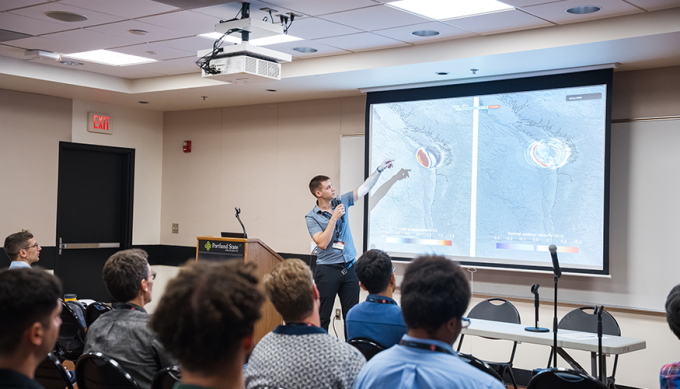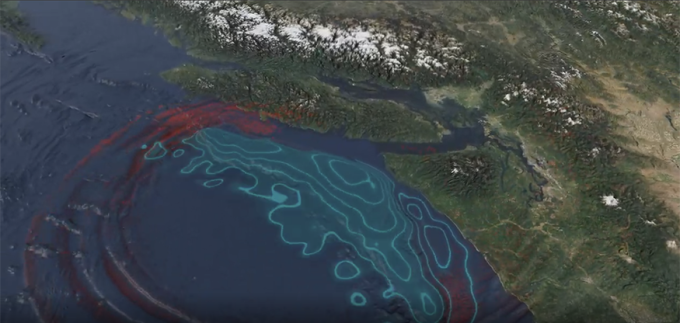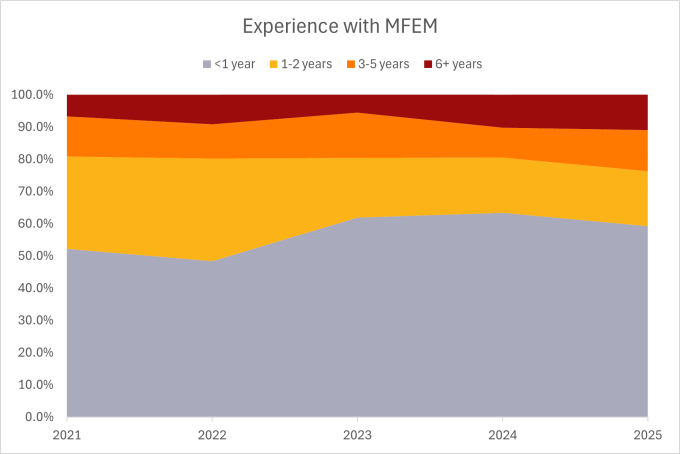Many scientific simulation codes—at LLNL and beyond—rely on the Livermore-led MFEM (Modular Finite Element Methods) software, which uses high-order finite element algorithms to discretize partial differential equations. The open-source project’s growing user and developer community gathered for its fifth annual workshop at Portland State University (PSU) on September 10–11.
The hybrid event brought together mathematicians, researchers, industry staff, postdocs, professors, students, and developers from 24 countries. MFEM project lead Tzanio Kolev reflected, “It has been very rewarding to see how our work has been useful in so many different fields and applications and how the community continues to grow at every workshop.”
Will Pazner, assistant professor in PSU’s Fariborz Maseeh Department of Mathematics and Statistics, welcomed attendees to a full agenda of 20 technical talks and 10 student lightning talks. “Seeing all of these applications inspires and motivates us to keep developing MFEM, adding new features, and continuing to make improvements,” he stated. “Portland State has a strong group of faculty and students who are interested in finite elements, including many who are using MFEM in their own projects.”
Exascale Elements
The technical talks kicked off with research led by Stefan Henneking from the University of Texas at Austin. His team developed a digital twin that improves tsunami forecasting for coastal areas near earthquake zones, such as the Cascadia subduction zone—a 1,000-kilometer stretch where tectonic plates converge and which happens to include Portland.
The project uses MFEM to create a 3D finite element mesh of the Cascadia zone based on bathymetric data (i.e., water depth measurements). Seafloor pressure sensor data informs inference of approximately 1 billion parameters that represent spatiotemporal seafloor motion during a hypothetical magnitude 8.7 earthquake occurring near the coastline. The framework then generates physics-based simulations of seismic wave and tsunami propagation. Henneking noted, “The enormous problem size required us to scale our application code to the largest supercomputers available today.” (See Figure 1.)
Livermore collaborator John Camier also presented at the workshop, detailing the kernel optimization strategy that scaled the digital twin to 43,520 GPUs of LLNL’s exascale El Capitan supercomputer and resulted in the largest known finite element computation. The team’s paper is a finalist for the 2025 ACM Gordon Bell Prize, which will be announced at the SC25 conference in November. This massive computational power combined with the team’s advanced algorithms make real-time tsunami forecasting possible. “Having our work recognized as a finalist is a big honor and gives us an opportunity to present our research to a large audience,” added Henneking. “MFEM’s active and responsive community was one of the primary reasons for developing our application code with it.”
Technical Breadth
MFEM’s utility in multiphysics modeling was on full display in additional presentations featuring thermomechanics, fluid mechanics, elastodynamics, and more. Students’ 10-minute lightning talks were grouped into three sessions with topics ranging from simplicial finite elements to the Darcy fluid flow problem and magnetohydrodynamic solvers. Notably, Joseph Signorelli, a PhD student at the University of Illinois at Urbana-Champaign, earned a longer time slot for his presentation on particle tracking in MFEM.
One of the project’s important new capabilities is called ∂FEM, which enables automatic differentiation (AD) of mathematical functions. AD automatically computes numerical derivatives and can result in faster, more accurate, and memory-efficient simulations. As LLNL computational mathematician Julian Andrej described, AD algorithms are applied at the quadrature point level in MFEM’s finite element decomposition process, where discretization helps AD run in parallel on GPUs.
“I really enjoyed seeing the variety of applications people are working on and the new capabilities the community is developing,” said LLNL staff scientist Sohail Reddy, who co-organized the workshop. “It feels like everyone’s pushing the boundaries of computational science together.”
Contest Champs
By now a highly anticipated part of the workshop, the annual visualization contest showcases unique and visually striking uses of MFEM. Entries are anonymized for judging by the organizing committee and divided into animation and image categories. (See the gallery on the MFEM website for past winners and entries.)
This year’s winning animation accompanied the tsunami forecasting project. Run on El Capitan, the simulation’s high fidelity comes from MFEM’s GPU-optimized solvers. (See Figure 2.) Runner-up animations featured a contact mechanics problem and a bifurcated fluid flow. The winning image showed an electric field emanating from a cylindrical electrode in a cardiac ablation setting. Leonardo Molinari, an Emory University student and former LLNL intern, produced the image by solving the Poisson equation with MFEM. (See Figure 3.) The runner-up image used MFEM miniapps to visualize a Lagrangian hydrodynamics triple-point problem.
According to Reddy, the selection process was tough. He noted, “The entries were all very creative and impressive in different ways across different disciplines. The contest is becoming more challenging each year.” Pazner agreed, “Some of the best submissions were made by our student participants, including one of the winning images and a runner-up.”
Five Years and Counting
Since development moved to GitHub in 2017, MFEM has grown steadily in code base, contributions, and breadth of scientific applications. Kolev pointed out in his annual “State of MFEM” talk that this year’s v4.8 release introduced about 53,000 new lines of code from 36 contributors. He added, “The team completed some really excellent work this year, from ∂FEM and bounding methods to remap solutions and contact mechanics solvers.” Version 4.9 is slated for late 2025.
Nearly 60 attendees traveled to the workshop in Portland. “I enjoyed meeting so many of the MFEM developers and contributors in person, many of whom I had previously only interacted with through virtual meetings and chats,” said Henneking, who first contributed to the software during his 2020 LLNL internship.
New this year was financial support for students. “One of the priorities for this workshop, being hosted at a university for the first time, was encouraging and facilitating student participation,” explained Pazner, who joined the MFEM team during his LLNL Fernbach Postdoctoral Fellowship in 2018. “Thanks to the generosity of our sponsors, we were able to waive student registration fees and offer travel support.” Compared to previous years, 2025 had the highest levels of both student and in-person attendance.
Five years in, the MFEM workshop continues to foster connection and collaboration among the computational math community and draw strong interest from new users. (See Figure 4.) “The project keeps growing and accelerating, and this has been the case for many years,” stated Kolev. “It has been great to see the community coming together, and I couldn’t be happier with the workshop this year.”
The event was jointly sponsored by LLNL and Amazon Web Services. In addition to Kolev, Pazner, and Reddy, organizers included LLNL’s Aaron Fisher, Justin Laughlin, and Ketan Mittal along with Qi Tang from Georgia Tech. Tang will host the 2026 edition of the workshop in Atlanta. Visit the workshop web page for speakers’ slides and recordings.
— Holly Auten
Photos are courtesy of Portland State University.





